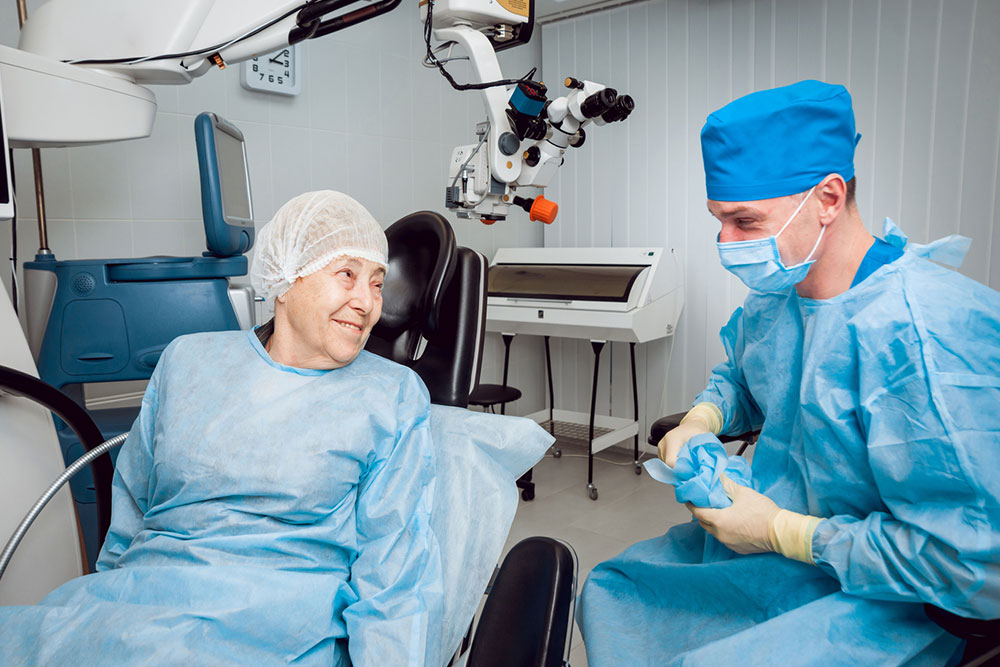
Cataract surgery – Process, after-care, and complications
Cataracts are fairly common across the country. According to a study, more than half the people aged 80 or older are either living with the condition or have undergone surgery to get rid of it. Cataract surgery is efficient and safe for older people. These surgeries are also extremely quick, with a session taking anywhere between 15 to 30 minutes at most. Here are some key elements, procedures, and complications of standard cataract surgery:
Cataract surgery process
While certain healthcare professionals may go about the process with subtle variations for more efficiency, here is the standard procedure of cataract surgery:
- The first step involves doctors numbing the surface of the eye on which the surgery will be done. Patients receive topical anesthesia in the form of eye drops so that they do not feel anything during surgery. While clients remain awake during the surgery, they will just see a rainbow of lights and nothing else while the session continues.
- Post anesthesia, the surgeon will make an incision using a laser beam or a surgical blade. This incision heals on its own with time and does not require stitches to close.
- During cataract surgery, the surgeon uses ultrasound waves to fragment the client’s lens into multiple small pieces. Subsequently, the pieces are suctioned out through a tiny incision. This technique is called phacoemulsification and is one of the most effective methods for breaking up and removing a cataract.
- After removing the cataract-ridden lens, surgeons insert a new lens into the client’s eyes. These lenses can be easily inserted into the eyes and unfold neatly on top of the area on which the cloudy lens had rested.
- Finally, the surgeon tapes a shield or an eye patch over the operated eye to protect it.
This is a rapid process, with surgeons having enough bandwidth to complete multiple such surgeries in a single day.
Cataract surgery after-care
Clients are not permitted to drive immediately after the surgery. Only after they have been given clearance by an eye expert after multiple appointments can they legally drive a vehicle. Additionally, clients will be given eye drops to nurture their operated eye. Additionally, patients will need to wear the eye patch or sunglasses as their eyes will be sensitive to light and other external elements.
People who have undergone a cataract surgery will need to avoid certain things, such as:
- Bending and exercising in the immediate days and weeks after the surgery.
- Performing strenuous activity and heavy lifting.
- Exposing the operated eye to water or other fluids.
- Exposing the operated eye to dust, dirt, and other infection-causing contaminants.
Apart from this, optometrists and other eye experts will advise patients to build certain habits based on their specific health condition and depending on how their body is reacting to the entire procedure. These suggestions are customized in nature and change from one client to the next. In this way, the after-care phase of cataract surgeries is just as useful as the main procedures.
Cataract surgery complications
As is the case with every surgery or therapy, cataract surgery also comes with a set of possible side effects and risks attached. Some such complications are listed here:
1. Fluid buildup in the retina
On some occasions, after a client has undergone cataract surgery, the blood vessels in their operated eyes begin to leak. This is known as the fluid buildup in the retina. This fluid tends to accumulate in the eyes and causes blurriness in such clients’ vision.
Healthcare professionals tend to treat this side effect with eye drops. In some cases, a leaking retina may take weeks or even months to heal.
2. Dislocated intraocular lens
The lenses used to replace the cataract-ridden one in a patient’s eyes are known as intraocular lenses (IOL), an artificial product that helps restore the vision of cataract patients. After surgery, in some instances, these lenses get dislocated or poorly fitted. As a result, people with dislocated intraocular lenses face issues such as double vision or blurred vision.
3. Retinal detachment
After surgery, some patients may experience a condition called retinal detachment, where the retina, a part of the eye that senses light and communicates that information with the brain, pulls away from the back of the eye. This can have serious consequences, including temporary or permanent vision impairment if not treated quickly and adequately.
The symptoms of retinal detachment include a feeling that a curtain or cloth has fallen over part or all of the eye, as well as the appearance of floating spots in the vision. Another sign of retinal detachment is seeing random light flashes in the eyes.
Cataract surgery costs
On average, a standard cataract surgery costs anywhere between $3,000 to $5,000, while a laser-assisted procedure involving advanced lens implants costs between $4,000 to $6,000.




